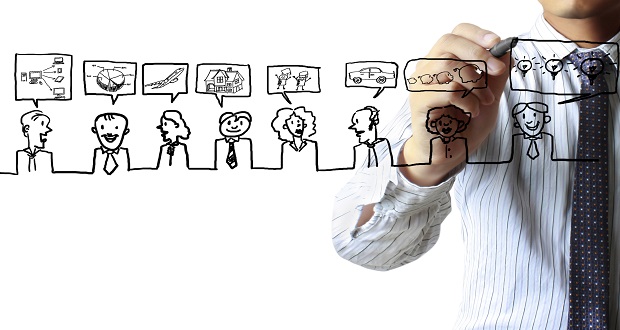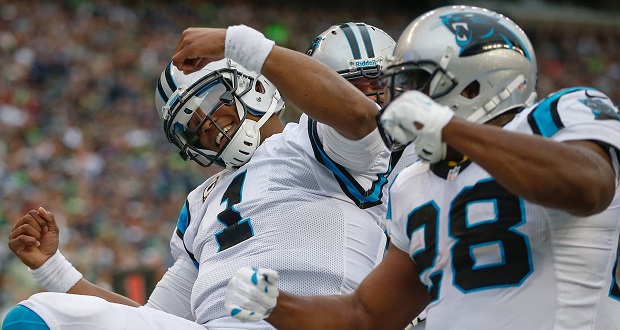
Have you ever been in a work meeting where someone said something regarding race, sexuality or cultural belonging that was so casually offensive that it shocked you and your colleagues into a wide-eyed silence?
Have you taken time to reflect upon what, exactly, is behind this silence? Or to reflect upon what was behind the silence of your colleagues who often come to you with their disapproval of such microaggressions, but only in private, and after the fact?
There is a profound connection between the damage caused by this public display of silence and the lack of trust in our diverse relationships in the workplace and beyond. Cultivating strong self-awareness and practicing strategies to disrupt discrimination can help us to operationalize justice in small ways and build community across difference.
Cultivating strong self-awareness and practicing strategies to disrupt discrimination can help us to operationalize justice in small ways and build community across difference. Click To Tweet
A recent experience provided me an opportunity to better understand the phrase “silence is violence,” along with a chance to practice an effective technique (known as RAVEN) for responding to racial microaggressions in a low-stakes setting. Operationalizing justice takes practice; opportunities like this one allow us to practice our skills so that when the stakes are higher, we aren’t paralyzed by inaction.
One night in March, while relaxing, scrolling through my phone, I came upon a startling photo posted in my high school graduating class’s Facebook group: it displayed an amateurish painting of Adolf Hitler performing the Nazi salute, a massive swastika adorning the background, with the words “Heil to Hitler” painted underneath, and dated the year that we would have been juniors. The author of the Facebook post explained that, while renovating our old high school building, he had discovered this painting, which apparently had been hanging on a classroom wall, obscured behind layers of student artwork, for the past twenty-some years. Expressing amusement that this would have been hung up at school, the author ended the caption with a casual “lol.”
I did not laugh out loud. A handful of classmates had, however, clicked the “laugh” and “surprise” reactions. It was more or less apparent that the author of the post had not taken into consideration the potential harm that could be caused by posting this image. But still, I thought, it’s 2021! Intent doesn’t correlate to impact. Why isn’t anyone else expressing repugnance at seeing Nazi imagery prominently displayed on our high school class’s page? Why isn’t anyone else speaking out in support of our classmates and their loved ones specifically targeted by Nazism? Why isn’t anyone else saying anything? I imagined this situation as the virtual high school class reunion version of that uncomfortable office meeting: a loud microaggression, followed by silent cringing.
Among the post’s replies, the closest thing to a condemnation of the Nazi imagery was the comment:
“What I want to know is, who painted this? And who thought it was okay to hang it up?”
Some classmates agreed, and many, in a jocular tone, wondered: who, among us, was the one white supremacist?
But that wasn’t my question. Identifying who made or hung up the painting was not what was so upsetting. The fact that not one person had said, “this image is harmful; please take it down immediately,” despite 150 people having seen the post, was much more disturbing. Why? Because, as poet Kyle “Guante” Tran Myhre’s poem famously articulates, “white supremacy is not a shark; it is the water.” In other words, as Dr. Angela Davis explains, while it is convenient to locate a glaring instance of racism within something outside of oneself to point at and condemn (and thereby attempt to absolve oneself as “not racist”), doing so doesn’t operationalize justice in a meaningful way. You may get rid of a shark; yet, the water is still there. To me, searching through our class yearbook for the one white supremacist felt like searching for a shark. I wanted someone to address the water – the systemic nature of white supremacy that is pervasive, internalized, and unlike sharks, often goes unnoticed.
Dr. Angela Davis explains, while it is convenient to condemn a glaring instance of racism within something outside of oneself (thereby attempting to absolve oneself as 'not racist'), this doesn’t operationalize justice. Click To TweetAs a white woman, I notice it within myself: the lure of silent complicity. After all, I had been hoping that “someone else” would have broken the silence to say: “If it was wrong to make a Nazi painting and post it on the physical walls of our public high school twenty years ago, what makes it okay to post a photo of a Nazi painting on the virtual Facebook wall of our high school’s page now?” I didn’t want to have to be the one to say it. I only went to school there for one year, I rationalized. I didn’t even graduate from there. I only really know a handful of people in this group. It’s not my place to speak up…
In these excuses, I recognize evidence of how I have internalized and manifest characteristics of white supremacy culture: the fear of conflict, of breaking the unspoken rule of “white solidarity,” fear of misogynist ridicule, of rejection, of loss of social capital. But these reasons are not legitimate; these reasons can be addressed, and they are frankly negligible compared to the legitimate reasons why some, especially those with historically excluded identities, may remain silent: racialized trauma, valid concerns about physical safety and psychological wellbeing, pressures to conform to a “professional” norm, fatigue.
I recognize how I internalize and manifest white supremacy culture: the fear of conflict, breaking the unspoken rule of 'white solidarity,' misogynist ridicule, loss of social capital. But these reasons are not legitimate. Click To TweetAs Beverly Daniel Tatum has said in her essay on the complexity of identity, everyone has a
“responsibility to [acknowledge] our complicity in the oppression of others.”
One way to take action beyond this acknowledgement is to disrupt complicity in ourselves and others, loudly – to break the silence.
The ways in which people are harmed by microaggressions are prolific, and they are relentless. Enduring these everyday insults, invalidations and assaults is enough to deal with; executing these disruptions takes less of a toll on those who do not share identities that are directly targeted. People with historically excluded identities don’t need to be saved. But no one should have to be alone in holding individuals accountable for the harm they cause. It is everyone’s responsibility.
The ways in which people are harmed by microaggressions are prolific and relentless, and that is enough to deal with; executing these disruptions takes less of a toll on those who do not share identities directly targeted. Click To TweetFor those instances in which you can recognize your responsibility and leverage your privilege to speak up, do it. Discomfort is an opportunity to learn something. If it seems like it will be difficult, especially in higher-stakes situations in which the aggressor holds a position of power in your workplace, get prepared in advance. Find and practice a strategy.
There’s no need to start from scratch; plenty of resources exist. And thank goodness for that. To break my own silence about that Facebook post, I took instruction from the inspiring work of Dr. J. Luke Wood and Dr. Frank Harris III, who devised a very effective strategy to respond to racial microaggressions in public (online and physical) spaces. Dr. Wood and Dr. Harris’s approach uses the memorable acronym RAVEN, which entails the following:
- R: Redirect the interaction immediately to prevent further harm from occurring
- A: Ask probing questions to create the cognitive dissonance necessary for a recognition of statements or actions as problematic
- V: Clarify your values, especially when you can refer to a group’s preexisting set of agreed-upon values
- E: Emphasize your feelings to alert the aggressor to the harm caused to you and potentially others
- N: Suggest next steps for the aggressor to take to apologize, correct and change behavior in the future
Regarding the Facebook post situation, there were at least two categories of aggressors: one was the original post’s author, and another included all of us whose complicit silence was allowing potential harm to be perpetuated. By implementing the RAVEN approach, it was possible to address both forms of aggression. Expressing why I was upset by the imagery, asking for it to be taken down, questioning our collective silence in response to the post, affirming my support for my Black, Jewish, and Queer classmates and their loved ones, and inviting fellow classmates to join me in affirming those values, resulted in multiple public apologies — from the original post’s author and some who had defended his post — as well as a vulnerable and honest conversation about the responsibility of bystanders to take action when harm is caused. Some feelings were hurt, a friendship or two may have been damaged, but the harm was effectively addressed
Can you think of a time that the RAVEN approach might have helped to effectively address a microaggression at work? Or in your community?
A helpful exercise can be to think about an ongoing microaggression that you or your colleagues face, and research and practice strategies that are likely to be effective in that particular context. In addition to the RAVEN tool, there are so many tools to implement speaking up effectively: Restorative dialogical frameworks, collective trauma recovery frameworks, intercultural intelligence, inclusive and nonviolent communication …all offer strategies and tools to help us improve our ability to disrupt discrimination and operationalize justice within our spheres of influence.
Recognizing when a “silence” we are experiencing is perpetuating “violence,” developing the skills to disrupt that silence effectively, and being prepared to utilize those skills at a moment’s notice in low and high-stakes contexts can help us to operationalize justice in our professional and personal spheres. The negative consequences of speaking up are worth risking for the possibility of deepening trust and building community and belonging throughout the diverse realms of our lives.
Recognizing when a 'silence' we're experiencing is perpetuating 'violence,' developing the skills to disrupt that silence effectively can help to operationalize justice. Click To Tweet The negative consequences of speaking up are worth risking for the possibility of deepening trust and building community and belonging throughout the diverse realms of our lives. Click To Tweet


















